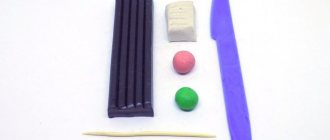Additional information signs (plates).
Additional information signs clarify and limit the effect of signs of other groups with which they are installed. Signs are not used on their own (without other signs). They are rectangular in shape, with the exception of plates 7.2.2-7.2.4, sign 7.13. With one sign (except for sign 5.15), no more than two plates are allowed. With sign 5.15, a larger number of plates can be used.
LIST OF REFERENCES USED:
Traffic Rules of the Russian Federation, 2001, “Road Safety”, 1997, “Manual on the Rules of the Road”, 1988, “For the Driver on the Rules and Safety of Road Traffic”, 1989.
Get text
Mandatory signs.
Prescriptive signs indicate the directions of movement of vehicles, their minimum speed on certain sections of the road, places of movement of cyclists and pedestrians, as well as the movement of certain types of vehicles. They are round in shape and have a blue background with a white image. Signs are installed directly in front of sections of roads on which a certain regulation is introduced. To warn traffic participants about the introduction of the corresponding regulation, signs can be equipped with a sign 7.1.1 “Distance to object”.
Lesson objectives:
Educational
- enhance and consolidate previously acquired knowledge on the topic “Responsibilities of road users”; ensure during the lesson the study and consolidation of new material, basic concepts and methods for ensuring road safety; to develop knowledge on the basics of safe behavior in modern traffic conditions. Developers to develop skills in predicting road conditions in accordance with the requirements of road signs; apply theoretical skills in traffic management during practical driving; develop skills in perceiving a large amount of information, the ability to process it and develop the right solution in various traffic situations.
Educational
- to instill in students a sense of responsibility for compliance with traffic rules; cultivate interest in the topic and subject being studied through connection with practical and professional activities; form an idea of professional significance.
Interdisciplinary connections:
“Driving vehicles”
Topic: “Road signs, road markings. Regulation of traffic on city streets. Practical training on the ground."
- the role of road signs and road markings in organizing road safety. “Road Safety” Topic: “Traffic Organization”, the consequences of failure to comply with the requirements of prohibitory, mandatory, warning signs and priority signs.
3. “Fundamentals of motor transport law”
Topic: “Responsibility for violating the requirements of road signs”
- administrative liability for violation of road sign requirements
Information and directional signs.
Information and directional signs inform traffic participants about its features, the location of settlements and other objects along the route. Some of these signs, in addition, introduce certain restrictions on driving modes and cancel them. They are rectangular in shape (except for sign 5.21.1). The background of most signs is blue. Signs with a green background are installed on highways, and with a white background - in populated areas. Signs with a yellow background indicate an upcoming detour to the section of road being repaired. Information and directional signs can be divided into the following subgroups:
inform about the nature of the road and traffic patterns on it; integrates lane information; informs about specially designated places for parking, stopping, pedestrian crossings and U-turns; informs about settlements, other objects and road landmarks; informs about traffic modes and detours.
Service signs.
Service signs are rectangular in shape and have a blue background. The symbol is depicted on a white background. It is used to inform traffic participants about the location of relevant objects along the route. They are installed directly near objects or at turning points towards them, if they are located away from the road. In addition, signs are pre-installed in populated areas 100-150 m away, and outside populated areas - 60-80 km, 15-20 km and 400-800 m from the object or turn towards it.
Prohibition signs.
Prohibition signs are used to introduce or lift traffic restrictions. They are round in shape with a red or black border. The background of most signs is white, sign 3.1 has a red background, and signs 3.27-3.30 have a blue background. The effect of prohibitory signs begins directly from the place where they are installed, and for most of them extends to the nearest intersection, and if there is no intersection in the populated area, to its end. Prohibition signs can also be installed at some distance from the place from which the restriction is imposed. In this case, the additional plate 7.2.1 “Distance to object” will indicate to the driver the distance from which this restriction comes into force. If a restriction is introduced on the road being crossed, then the sign must be installed in front of the intersection with a sign 7.3.1 - 7.3.3 “Direction of action”. Often prohibition signs are used with signs specifying the type of vehicle to which the restriction applies, or the duration of the signs. According to their purpose, prohibitory signs can be divided into the following subgroups: prohibiting the movement of all or certain types of vehicles; limiting weight, dimensions, distance; restricting the direction of movement, prohibiting passage without stopping at customs, or prohibiting movement due to danger; signs introducing prohibitions on overtaking, stopping, parking, sound signals, limiting speed, and signs canceling previously introduced restrictions.
Priority signs.
Priority signs establish the order of passage through dangerous places where simultaneous traffic in two directions is impossible and one of its participants is obliged to give way to the other. Such dangerous places include intersections, road crossings, narrow sections of roads and artificial structures. Priority signs have different shapes and colors. They can be divided into three subgroups: signs installed on main roads, 2.1, 2.2, 2.3.1-2.3.3; signs installed at exits to main roads, 2.4, 2.5; installed on narrow sections of roads and artificial structures 2.6, 2.7.



